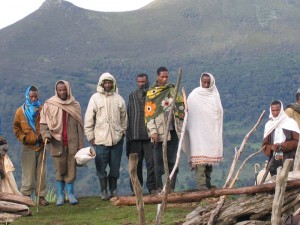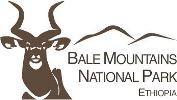People And Natural Resource Use

People and Natural Resources Use
The population of the Bale area consist almost entirely of Eastern Kushitic Oromo (or Galla), formerly animistic cattle-breeders who have adopted Islam during the last few centuries. There is little written history, but the Oromo are regarded as the indigenous people of this area and ‘Afan Oromo’ is the local language. People living in Bale today tell of their ancestors originating from the Bale-Arsi massif where two kingdoms existed – Bale in the east and Gedab in the West, with the borderline at Dinsho. After Menelik’s conquest, the Oromo kingdoms came under Amharic rule in 1890, and Goba became the capital of the Bale region.
Paleontological evidence and historic reports suggest that there were virtually no permanent settlements in the Bale Mountains before the 1960s although seasonal movements up to the plateau during the dry season was known to occur. Pastoralism and honey gathering were the main traditional economic activities of the population before European influence took hold in the 1970s. The transhumance system of Oromo pastoralists is known as the Godantu system and is a key feature of traditional human use of the Bale Mountains. In this system, livestock, particularly cattle are sent to higher grazing grounds during the months when crops are growing in lower altitude areas or into the forest for shade during the dry season. However this should not be confused with the cattle movements that are a consequence of the loss of grazing land outside of the park, thus forcing cattle into the park to graze. Agriculture is increasingly being practiced as grazing lands become scarce or unproductive, with barley as the main crop.
Population density in the Bale Zone is highest in the foothills and plants north of the Bale Mountains massif, whereas the density in Bale Mountains National Park is comparatively low but rising. This rapid population growth in the Ethiopian highlands has resulted in an increase in resource users in the park, as well as permanent and seasonal settlements. The people residing in the highlands are now mixed agro-pastoralists keeping cattle, sheep and goats as well as growing barley at higher and higher elevations. Contrary to the much more populated northern Ethiopian highlands, the upper limit of barley cultivation is around 3000-3500 m asl, but possibly rising as climate change takes effect locally. Currently agriculture is expanding dramatically in the Harenna forest and increasingly encroaching into the grasslands and Ericaceous heathlands. Lower down, most of the natural forests have been lost to 2000 years of cultivation. The upper montane and Afroalpine areas are primarily used for grazing and transhumance as grazing is still of major important to park-resident and park-adjacent communities in the Bale Mountains. The ‘guassa’ grass of the genus Festuca is used for thatch and basket making. In the Bale mountains there are recorded 42 species used as medicines and a further 10 that are used for food or drinks. The Ericaceous heathlands are an important source of firewood and building material locally.
